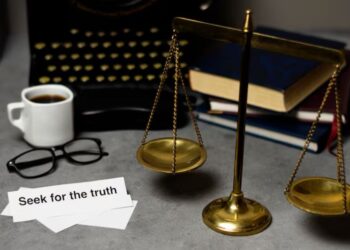In the heart of sunny West Palm Beach, residents and visitors alike are blessed with a plethora of recreational opportunities that make every day feel like an adventure waiting to happen. From hiking in the wilderness to participating in extreme sports, there’s always a chance that things might not go as planned, leading to injuries. In such cases, it’s crucial to understand the legal implications of recreational activities and who bears responsibility when fun takes an unfortunate turn. Here is a look at these implications and the role of personal injury attorneys in West Palm Beach in determining liability and seeking compensation in case of mishaps.
Legal Implications Of Recreational Activities
Recreational activities encompass a wide range of pursuits, from team sports like soccer and basketball to solo adventures such as hiking, skiing, or even zip-lining. While these activities offer a great way to unwind and stay active, they also come with inherent risks. Understanding the legal implications can help you navigate these potential hazards more effectively.
Assumption of Risk
One of the fundamental legal concepts surrounding recreational activities is the assumption of risk. When you willingly participate in an activity, you are generally assumed to be aware of and accepting of the risks associated with it. For instance, if you decide to go snowboarding, you acknowledge that there’s a chance of injury, whether it’s from a fall or a collision with another snowboarder. In such cases, it may be challenging to hold anyone else legally responsible for your injuries, as you voluntarily assumed the risks.
Negligence
While the assumption of risk plays a significant role, it doesn’t mean that individuals or entities involved in organizing or supervising recreational activities can’t be held liable for injuries. If someone’s negligence contributed to your injury, you may have grounds for a legal claim. For example, if a ski resort fails to maintain its equipment properly, resulting in a chairlift malfunction that leads to injuries, it could be held responsible.
Product Liability
Sometimes, injuries during recreational activities can occur due to faulty equipment or products. If you get injured because of a defective helmet, malfunctioning bike brakes, or any other faulty gear, you may have a product liability claim against the manufacturer or distributor of that product.
Premises Liability
In cases where recreational activities take place on someone else’s property, premises liability may come into play. Property owners have a responsibility to maintain their premises in a safe condition. If you get injured due to hazardous conditions on their property, such as poorly maintained hiking trails or a lack of warning signs, you might have a premises liability case.
Waivers and Liability Releases
Many recreational activities require participants to sign waivers or liability releases. These legal documents are designed to protect the organizers or property owners from liability in case of injuries. However, the enforceability of such documents can vary depending on various factors, such as the wording of the waiver, the specific circumstances, and state laws. It’s essential to consult with an attorney if you’re injured despite signing a waiver.
Injury Lawyers As Resources For Addressing Liability
Navigating the legal complexities of recreational activity-related injuries can be challenging. This is where injury lawyers come into play as valuable resources. These legal professionals specialize in personal injury cases and can provide crucial assistance in determining liability and seeking compensation for your injuries.
Here are some ways injury lawyers can help:
Legal Expertise
Injury lawyers have a deep understanding of personal injury laws, including those related to recreational activities. They can assess the specifics of your case, identify potentially liable parties, and determine the best course of action to pursue your claim.
Investigation
Lawyers have the resources and expertise to conduct comprehensive investigations into your injuries. They can put together evidence, interview witnesses, and consult with experts to build a compelling case on your behalf.
Negotiation and Settlement
In many cases, injury lawyers can negotiate with insurance companies or opposing parties to reach a fair settlement without going to court. This can save you time and reduce the stress associated with a lawsuit.
Litigation
If a fair settlement cannot be reached, injury lawyers are prepared to take your case to court and advocate for your rights. They will represent your interests and fight for the compensation you deserve.
Ensuring Your Rights are Protected
Personal injury attorneys in West Palm Beach ensure that your rights are protected throughout the legal process. They can help you avoid common pitfalls, such as accepting inadequate settlement offers or making statements that may harm your case.
The Bottom Line
In conclusion, recreational activities are meant to provide enjoyment and relaxation, but accidents can happen. Understanding the legal implications of such activities is essential to determine who may be responsible for injuries. While assumption of risk is a significant factor, negligence, product liability, premises liability, and waivers can all play a role in liability determination. Injury lawyers serve as valuable resources in these situations, offering legal expertise and guidance to help you navigate the complexities of personal injury claims. So, whether you’re hitting the slopes or embarking on a thrilling adventure, always stay informed about your legal rights and options in case fun turns into an injury.










